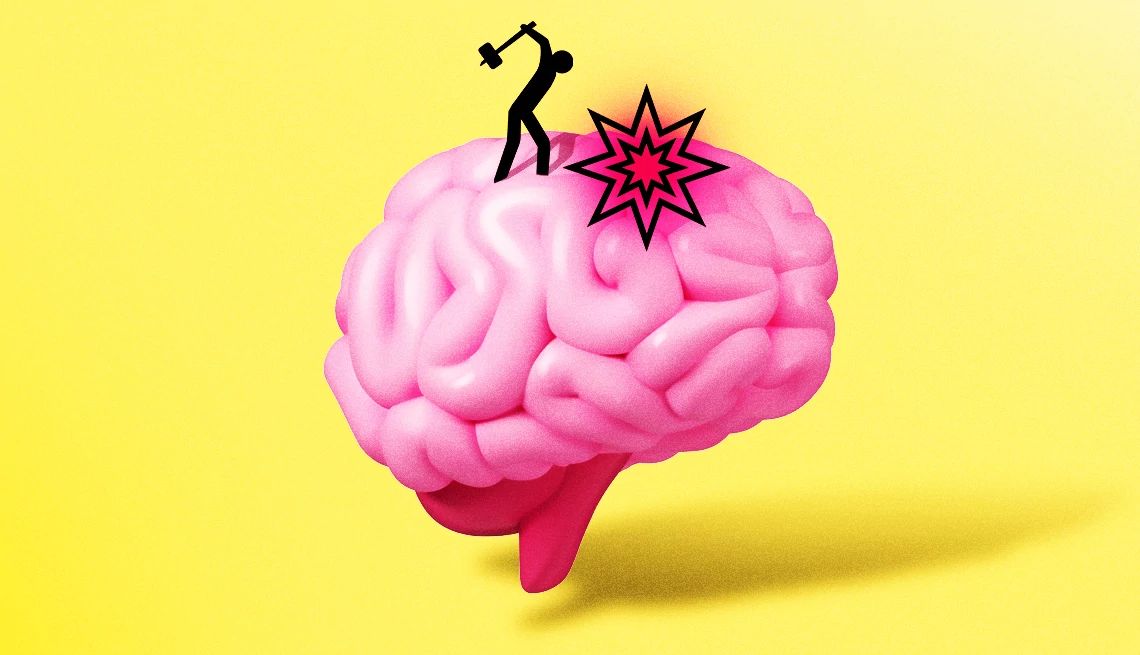AARP Hearing Center


There’s a reason people call troubles “headaches.” Recurrent headaches are among the top neurological causes of disability, according to the World Health Organization. Even mild headaches can create distraction and frustration, leading to lost work and lost opportunities. And since there are more than 300 identified types of headaches, seeking a diagnosis and treatment plan for yours can lead to frustration on its own.
Although important advances have been made, scientists still don’t fully understand the brain mechanics behind even the most common forms of headache, which include throbbing migraines, stabbing cluster headaches, and the dull ache or tightness of tension-type headaches. But specialists have discovered steps you can take to reduce your risk of getting a headache, as well as effective treatments for the ones that do occur.
We asked top specialists for recommendations on managing headaches after 50. Here is their advice.


THE BASICS
1. Keep a steady schedule
Your body is optimized for routines. Skipping meals, for example, has been associated with more migraine headaches in studies. Changes in exercise or sleeping habits can also trigger headaches, studies have shown. So set a schedule and stick to it — even on the weekends.
2. Make exercise part of your week
Regular strength training and high-intensity aerobic exercise have been found to limit the number of headaches people get, according to a report in the Journal of Headache and Pain. “Migraine does best with moderate aerobic exercise several times a week,” says Morris Levin, M.D., director of the UCSF Headache Center. Levin recommends racket sports, swimming, or walking up and down hills.
3. Stay grounded
No surprise here: Stress seems to be a factor in migraines, tension-type and other common headaches. Avoiding stress altogether might be unrealistic, but some behavioral therapies can help keep it under control. For example, progressive muscle relaxation — where you concentrate on relaxing each set of muscles in your body, one by one — can reduce headache frequency and severity by 45 to 60 percent, according to the American Migraine Foundation.
4. Hydrate, hydrate, hydrate
As you get older, your risk of dehydration increases, and dehydration can lead to more frequent headaches. Although fluid needs vary from person to person, on average a woman should drink nine cups of water or other fluids per day, while a man should drink 13, according to the Academy of Nutrition and Dietetics. Amaal Starling, M.D., a neurologist at the Mayo Clinic and associate professor at the Mayo Clinic College of Medicine, recommends checking your water intake by looking at your urine. “You’re looking for a very, very pale yellow,” she says. If it’s darker than that, you need to drink more water. But be careful not to overdo, because drinking too much water can make you dangerously low in sodium. If you’re not thirsty and your urine is light yellow, you’re hydrated enough.
5. Opt for whole foods
Specialists recommend steering away from processed foods that contain high levels of nitrates, nitrites, artificial sweeteners and monosodium glutamate (MSG), since these additives are associated with headaches. Instead, stick to whole foods that have a low glycemic index to reduce blood sugar spikes. Especially beneficial: green vegetables, fruits, chickpeas and lentils.
6. Get your micronutrients
Studies have shown that vitamin B2 may help prevent headaches, according to a 2022 meta-analysis in Nutritional Neuroscience. The same is true for magnesium, according to a 2021 cross-sectional analysis in the journal Headache. In addition, supplementation with omega-3 fatty acids may have a preventative effect, a 2002 clinical trial published in the Journal of Adolescent Health found. Doctors usually recommend getting these nutrients from healthy foods like dark leafy greens and salmon, but if you’re deficient, you might want to consider a supplement. Be sure to check with your doctor to avoid any conflicts with any conditions that you have or drugs that you’re taking, Starling warns.






































































You Might Also Like
6 Moves to Keep You Fit This Winter
Try these to stay strong and healthy in the colder months
Outsmart the System: Tips and Tricks for Getting Good Health Care
Get your prescriptions easily and avoid surprise medical bills
25 Great Superfoods for Longevity
Delicious foods tied to lower risk of disease and death